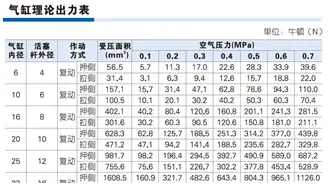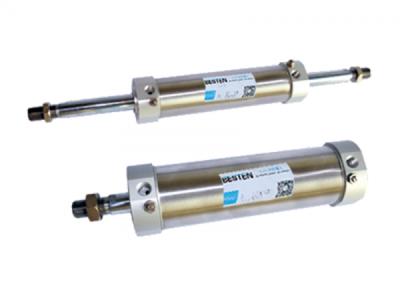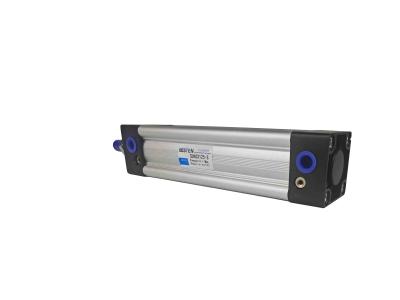Selection of twin cylinder
Before the selection, we need to understand the following points of the two-shaft cylinder:
1. Characteristics of dual-shaft cylinder;
2. Application of dual-shaft cylinder;
3. Precautions for the selection of dual-shaft cylinders;
4. Case study of two-shaft cylinder
1. Characteristics of dual-shaft cylinder
Two-shaft cylinder is a commonly used type of cylinder, which is characterized by the use of double piston rods for output force, so it has a large output force; Dual-shaft cylinder is suitable for occasions where large pressure force is required or space is compact;
2. Application of dual-shaft cylinder
The dual-shaft cylinder is suitable for some occasions that require greater pressing force, such as press, stamping die, etc. At the same time, due to its compact structure, it is also suitable for some occasions with compact space. In some non-standard automation equipment will also use the two-shaft cylinder as the actuator, the following is the case application of the two-shaft cylinder:
(1) Pressure retaining fixture, dual-shaft cylinder can often be used in air tightness fixture, because the output is relatively large; The designs are guided by linear bearings;
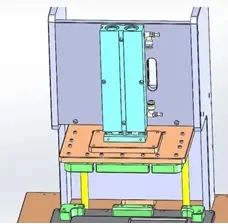
(2) The vehicle can generally be used for side pushing and pressing occasions, and there is a linear guide rail at the bottom for guidance;
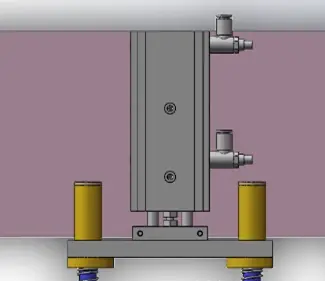
(3) Taking mechanism is also commonly used in automatic design;

(4) cartridge type feeding device, dual-shaft cylinder to push the bottle cap to the designated position

(5) A blocking cylinder can be made on the assembly line when the load is not large, but it is generally not advocated, and the lateral force is not as good as the three-axis cylinder.
3. Precautions for the selection of dual-shaft cylinders
In the selection of dual-shaft cylinder, it is necessary to pay attention to the calculation of lateral load and use occasions, if the load exceeds a certain range, it is recommended not to use dual-shaft cylinder, because it does not have its own guiding performance;
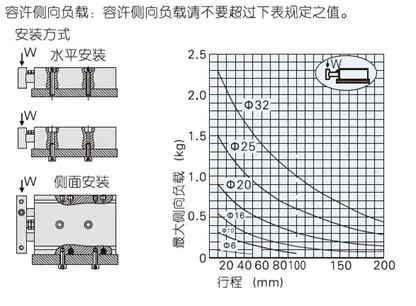
After knowing the basic characteristics and application of the two-axis cylinder, we began to select the cylinder, and it should be noted that the output of the two-axis cylinder is double the force.
The dual-shaft cylinder itself has certain anti-bending and anti-torsional properties, and can withstand certain lateral loads. This makes the two-shaft cylinder show better performance under complex load;
It should be noted that the two-axis cylinder does not have guidance, so it may cause damage to the cylinder seal ring when used for a long time, resulting in air leakage, in order to solve this problem, it is usually necessary to install linear bearings or linear guides on the two-axis cylinder for guidance support.
4. Case study of two-shaft cylinder:
Use a two-axis cylinder to push an object (100KG) horizontally, the friction coefficient between the object and the working surface is 0.3, the pushing stroke is 100mm, the pushing time is 0.5s, and the working pressure is 0.5Mpa.
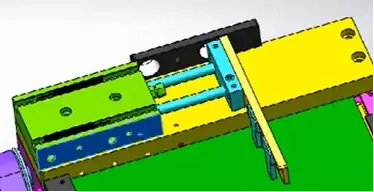
(1) Calculate the thrust required to push the load
F = u = 0.3 * 100 * 10 mg = 300 n
(2) Average speed V=100/0.5=200mm/s (100mm/s<V<500mm/s);

Judge the safety factor by the running speed, query the safety factor table, safety factor η=0.5.
(3) Calculate the theoretical thrust required by the cylinder;
F1=F/η=300/0.5=600N;
(4) Look up the table to select according to the calculated thrust;
When the air pressure is 0.5Mpa, the side thrust is greater than 600 and the cylinder diameter is 32;
